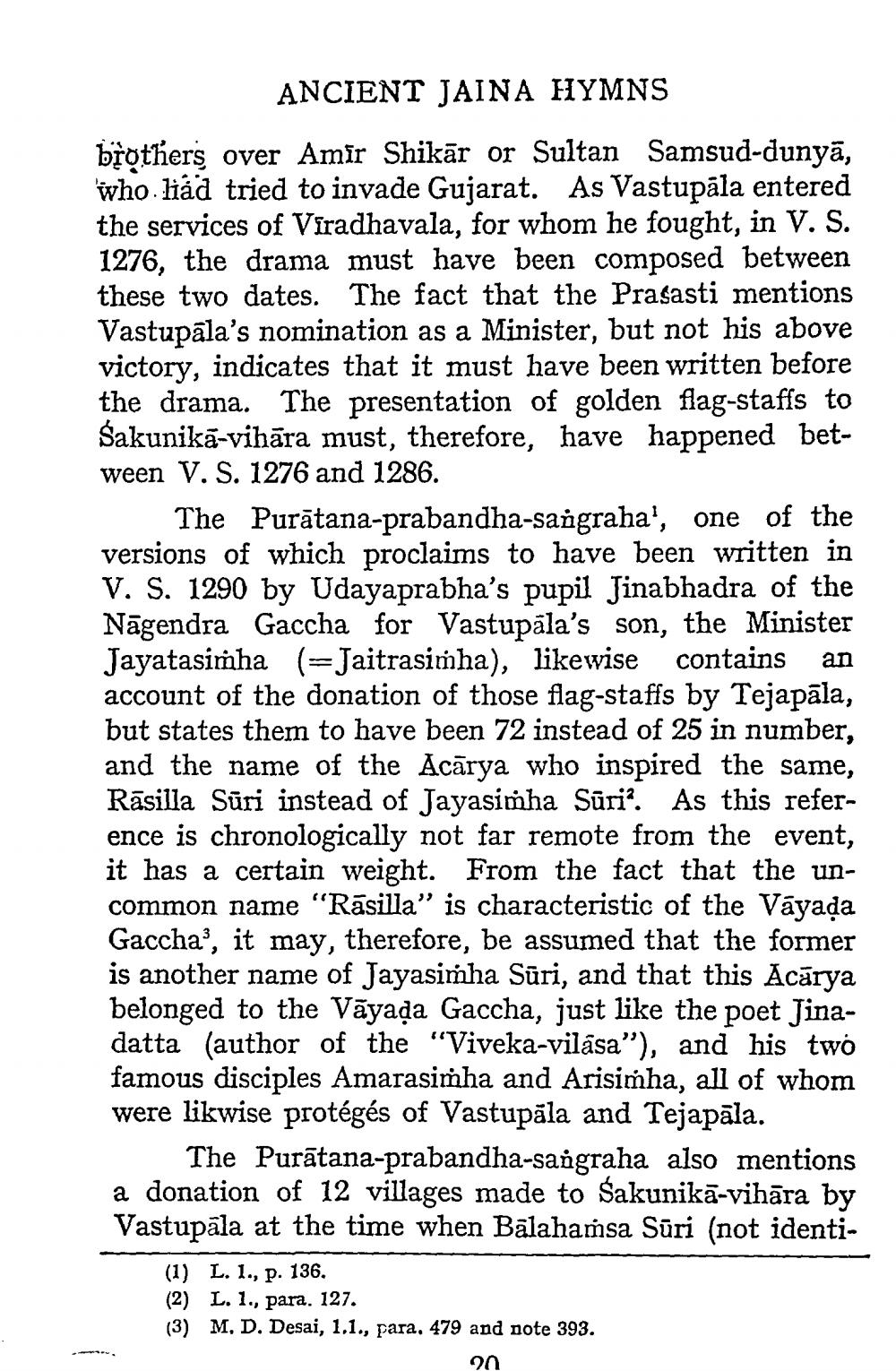________________
ANCIENT JAINA HYMNS
brothers over Amir Shikār or Sultan Samsud-dunyā, who liảd tried to invade Gujarat. As Vastupāla entered the services of Viradhavala, for whom he fought, in V. S. 1276, the drama must have been composed between these two dates. The fact that the Prasasti mentions Vastupāla's nomination as a Minister, but not his above victory, indicates that it must have been written before the drama. The presentation of golden flag-staffs to Sakunikā-vihāra must, therefore, have happened between V. S. 1276 and 1286.
The Purātana-prabandha-sangraha', one of the versions of which proclaims to have been written in V. S. 1290 by Udayaprabha's pupil Jinabhadra of the Nāgendra Gaccha for Vastupala's son, the Minister Jayatasimha (=Jaitrasimha), likewise contains an account of the donation of those flag-staffs by Tejapāla, but states them to have been 72 instead of 25 in number, and the name of the Acārya who inspired the same, Rāsilla Sūri instead of Jayasimha Sūri?. As this reference is chronologically not far remote from the event, it has a certain weight. From the fact that the uncommon name "Rāsilla" is characteristic of the Vayada Gaccha, it may, therefore, be assumed that the former is another name of Jayasimha Sūri, and that this Acārya belonged to the Vāyada Gaccha, just like the poet Jinadatta (author of the "Viveka-vilása”), and his two famous disciples Amarasimha and Arisimha, all of whom were likwise protégés of Vastupāla and Tejapāla.
The Purātana-prabandha-sangraha also mentions a donation of 12 villages made to Sakunikā-vihāra by Vastupala at the time when Balahamsa Sūri (not identi
(1) L. 1., p. 136. (2) L. 1., para. 127. (3) M. D. Desai, 1.1., jara. 479 and note 393.




